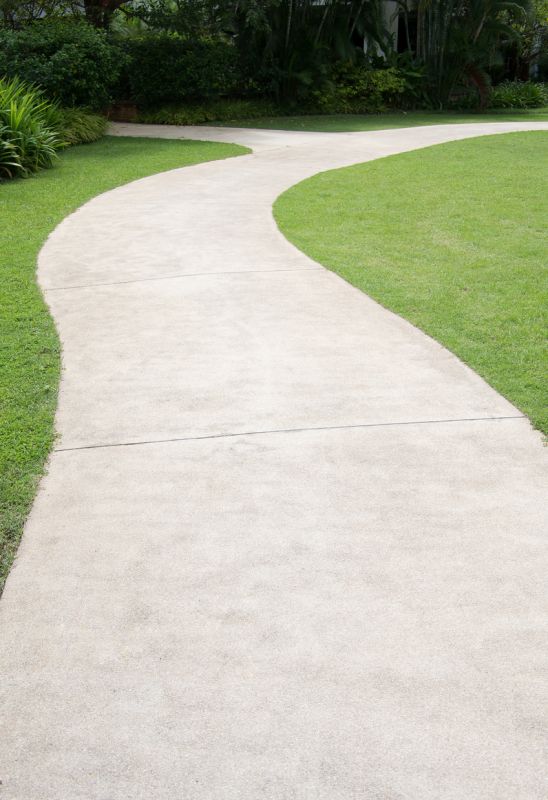Leading Products For Footpath Expansions To Enhance Urban Spaces
Explore top-rated solutions designed to expand footpaths efficiently, improving pedestrian safety and accessibility in busy areas.
 Expanding a footpath can enhance accessibility, accommodate increased pedestrian traffic, or improve safety in various outdoor settings. When selecting products for footpath expansions, it is important to consider durability, ease of installation, and suitability for different terrains. Materials such as modular pavers, concrete slabs, and rubber tiles are commonly used to create stable and attractive pathways. These products can be tailored to fit specific dimensions and aesthetic preferences, ensuring that the expanded footpath integrates seamlessly with existing infrastructure.
Expanding a footpath can enhance accessibility, accommodate increased pedestrian traffic, or improve safety in various outdoor settings. When selecting products for footpath expansions, it is important to consider durability, ease of installation, and suitability for different terrains. Materials such as modular pavers, concrete slabs, and rubber tiles are commonly used to create stable and attractive pathways. These products can be tailored to fit specific dimensions and aesthetic preferences, ensuring that the expanded footpath integrates seamlessly with existing infrastructure.
Types of Products For Footpath Expansions
Concrete Slabs
Precast concrete slabs provide a durable and uniform surface for footpath expansion, suitable for various environments.
Interlocking Pavers
Interlocking pavers are versatile tiles that lock together to form stable, customizable pathways.
Rubber Tiles
Rubber tiles offer a cushioned surface ideal for safety and comfort in footpath areas.
Gravel and Crushed Stone
Loose gravel and crushed stone provide natural drainage and a rustic look for footpath expansions.
Wooden Decking Boards
Wooden planks can be used to create elevated or traditional-looking pathways in garden or park settings.
Composite Decking
Composite materials combine durability with a natural appearance, suitable for long-lasting footpaths.
Permeable Pavers
Permeable pavers allow water to pass through, reducing runoff and aiding drainage.
Stone Slabs
Natural stone slabs offer an elegant and durable surface for footpath extensions.
Plastic Grid Systems
Plastic grid systems provide a stable base for gravel or soil, ideal for flexible pathways.
Erosion Control Mats
Erosion control mats help stabilize soil and prevent washouts in footpath expansion areas.
Drainage Channels
Drainage channels facilitate water runoff management along expanded footpaths.
Edge Restraints
Edge restraints define the pathway borders and keep materials in place.
Leveling Compounds
Leveling compounds ensure a smooth, even surface for paving or slab installation.
Geotextile Fabrics
Geotextile fabrics reinforce soil stability beneath the pathway surface.
Sealants and Joint Fillers
Sealants and joint fillers help protect and stabilize paving materials against movement and water ingress.
Popular Choices
Interlocking pavers are frequently chosen for their ease of installation and variety of styles.
Precast concrete slabs are common for their durability and straightforward placement.
Rubber tiles are popular for safety-focused pathways and recreational areas.
Gravel pathways are favored for natural aesthetics and quick installation.
Permeable pavers are trending for their water management benefits.
Wooden pathways are chosen for their classic look and ease of customization.
Natural stone slabs remain a popular choice for their aesthetic appeal and longevity.
Plastic grid systems are used for versatile, stable surfaces over loose materials.
Drainage channels are often incorporated in high-traffic or water-prone areas.
Leveling compounds are essential for preparing surfaces before installing paving materials.
Edge restraints are widely used to maintain pathway borders and prevent spreading.
In addition to surface materials, support accessories like edge restraints, leveling compounds, and drainage solutions play a vital role in ensuring longevity and functionality. Proper planning and selection of the right products can help prevent issues such as shifting, cracking, or water pooling. Whether for residential gardens, commercial walkways, or public parks, the right combination of products can facilitate a safe and visually appealing footpath expansion.
Installation methods vary depending on the type of materials chosen. Interlocking pavers and tiles often feature snap-lock mechanisms for quick assembly, while poured concrete requires precise mixing and curing processes. Some products are designed for DIY installation, providing detailed instructions and tools, whereas others may require professional expertise. Considering the specific site conditions and project scope will guide the selection of the most suitable products for a successful footpath expansion project.
Key Buying Considerations
- Assess the expected foot traffic to determine the durability requirements of the materials.
- Consider the terrain and soil conditions to select appropriate base and surface materials.
- Evaluate the ease of installation, especially if planning a DIY project.
- Think about drainage and water runoff management to prevent pooling and erosion.
- Choose materials that match the aesthetic of the surrounding environment or existing pathways.
- Determine the required lifespan and maintenance needs of the products.
- Check for compatibility with existing infrastructure, such as curbs and steps.
- Consider accessibility features, such as slip resistance and level surfaces.
- Review local building codes or regulations that may influence material selection.
- Estimate the overall project budget, including materials and potential professional labor.
- Evaluate the environmental conditions like freeze-thaw cycles that may impact material choice.
- Select products that are available in sizes and colors suited to your design vision.
- Ensure that the installation method aligns with your skill level and available tools.
- Look for products with good reviews or recommendations for similar projects.
- Plan for future expansion or repairs by choosing modular and easily replaceable components.
This content contains affiliate links. We may earn a commission if you purchase through these links, at no additional cost to you.
